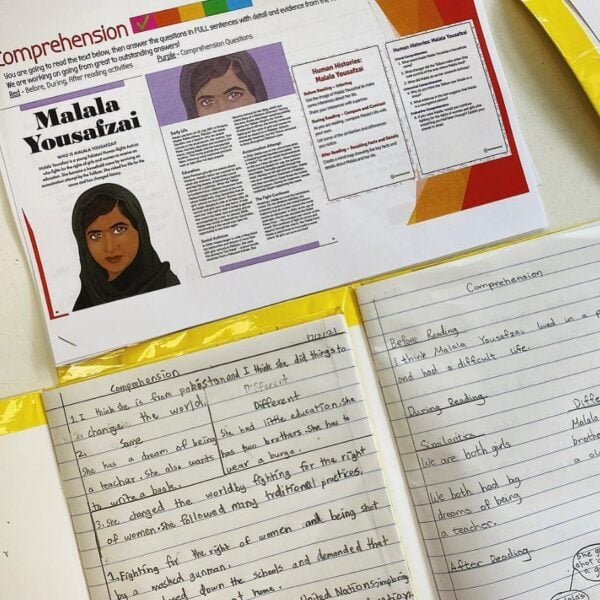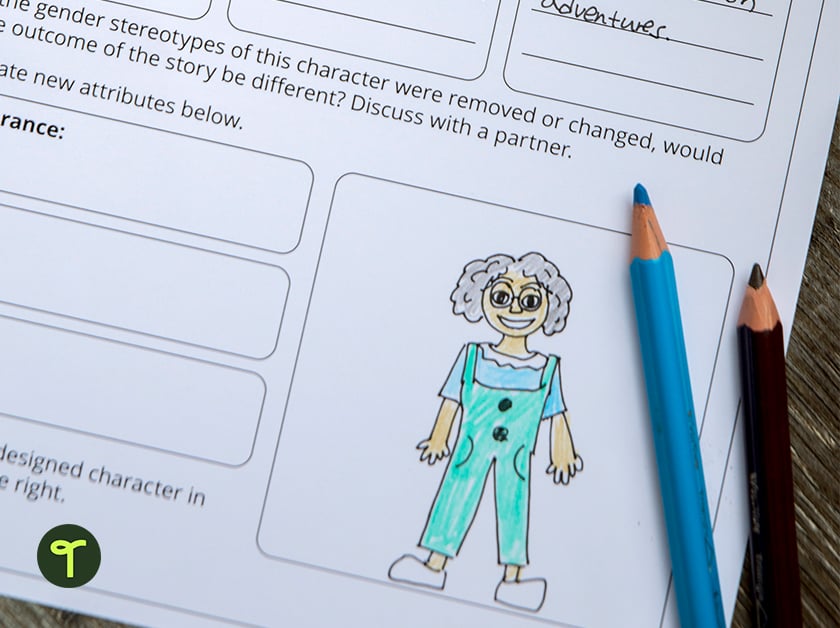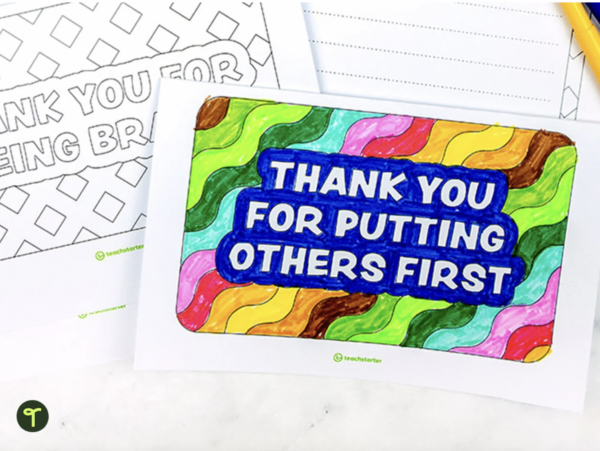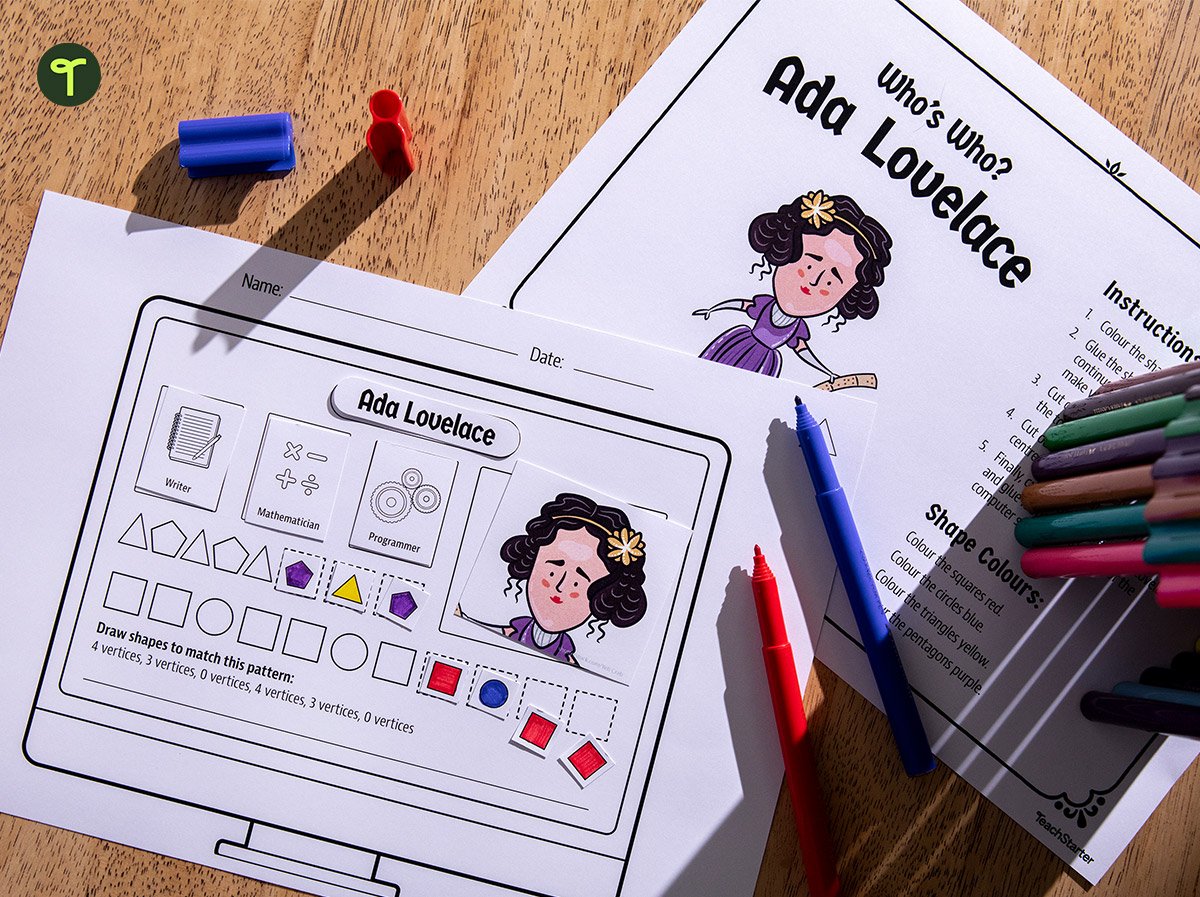Are you looking for new International Women’s Day ideas for the classroom that will have a long-lasting positive impact on your students? You have come to the right place!
We know that conversations about gender with primary school-aged kids can often centre around ideas like ‘that sport is just for boys’ or ‘pink is just for girls.’ But every March, International Women’s Day gives us a new way to explore gender issues and ideas with our students.
How do you explain International Women’s Day to children, and how can you keep the work of one day going all year long? The teachers on the Teach Starter team — they’re the ones creating all the resources teachers love — have put together this guide to marking International Women’s Day with kids to save you serious time on your lesson planning!
Short on time? Head over to our International Women’s Day printables!
If you’re unsure if this is the right event to celebrate in your classroom, you might consider this — studies have shown that gender stereotypes conveyed not just by parents but also by teachers can have an impact on kids’ own feelings about how gender will affect someone’s success in specific subjects.
Facing some students who believe boys are more inclined to excel in STEM subjects and girls in languages? This commonly held myth is one you can help dispel in your classroom, along with myriad other issues women and girls face every day. Read on for some of our teacher team’s favourite International Women’s Day activities for kids, plus some simple changes you can make in your teaching to help in the fight for gender equity.
International Women’s Day Ideas for the Classroom
Teach About the History of International Women’s Day
The United Nations officially recognised International Women’s Day in 1975, and it’s been honoured around the world ever since. But why do we set this day aside every March here in Australia, and what can our students learn from it?
Explore the history and importance of setting aside a day to talk about the impact of women on society and ways to ensure there is gender equality in your own classroom.
- Download an International Women’s Day teaching presentation to help you explain to kids why we have the holiday and what they can do to honour the day’s intentions.
- This International Women’s Day fact sheet can also be printed for students to take home in their folders if they want to discuss what they learned with their parents or carers.
Write Letters to Important Women in Their Lives
One simple — but effective — International Women’s Day idea for teachers is to talk about the important female caregivers out there today. From grandmothers and aunties to mothers and foster mums, to doctors and nurses, and so on, each shapes history in their own way.
Consider challenging your students to write letters thanking these women for the impact they have on others as a way to practise including all the important parts of a letter — date, salutation, body, closing and signature — while honouring these important figures in society.
You might want to give your class a few writing prompts to help your students think about specific reasons they are thankful for their caregivers. For example:
- Consider a female teacher who has made a positive impact on your learning. Write a letter to her, mentioning specific ways she has helped you grow.
- Think about a family friend or neighbour who has been like a caregiver to you. Write her a letter that thanks her for her kindness and support.
- Write a letter to a female family member who lives far away, letting her know how much you miss and appreciate her.
- Think about a woman in your community who has made a positive contribution. Write a letter explaining why you appreciate her work to make the community a better place.
Print a Thank You For Putting Others First template for students to practise expressing gratitude through letter writing.
Issue a Girl Power Reading Challenge
Give your students’ at-home reading time an International Women’s Day theme during March with a reading challenge! Your kids can be challenged to:
- Read books by authors whose last names start with W, O, M, E or N
- Read a book about a woman you find inspiring
- Read a book written by a female author
- Read a book with a female protagonist
- Read a book by an author whose last name starts with G, I, R or L
A challenge like this won’t just help your students do a bit of investigating and develop their reading skills, but it will also create awareness of various female authors and protagonists that they perhaps didn’t know before.
Lead a Brainstorm About Gender Stereotypes
One of the easiest ways to debunk those gender stereotypes is to talk about them openly in the classroom. Define the word stereotype for your students, and break them into small groups.
Assign each group ‘boy’ or ‘girl,’ and challenge the groups to come up with as many stereotypes as they can think of related to their assigned gender. After giving your students some time to work, invite volunteers to share some of the stereotypes they thought of, listing them on your whiteboard.
Next, challenge your groups to come up with ways that people do not always fit the stereotypes listed on the board. For example, if one of the listed stereotypes is ‘women are good cooks,’ students may use personal experience and note that a father in their home does all the cooking.
As an extension activity, consider assigning a quick write, setting aside 10 minutes for students to write about one time they fit or did not fit a stereotype.
Download a Female Gender Stereotypes Teaching Presentation to help lead your discussion.
Assign Research Projects on Influential Women
Researching influential women from around the world and preparing a report on their experiences and achievements is a perfect International Women’s Day activity that will help students meet a number of curriculum standards!
Do you need a list of influential women to get students started? Here’s a short list!
- Lowitja O’Donoghue
- Malala Yousafzai
- Julia Gillard
- Wangari Maathai
- Greta Thunberg
- Valentina Tereshkova
- Frida Kahlo
- Yuna Kim
- Indira Ghandi
- Dame Quentin Bryce
- Margaret Thatcher
- Rosalie Kunoth-Monks
You may start off with a look at one of the women from the list before students create their projects! Sydney Year 6 teacher Serena of @thewrightclassroom used our printable biography of education rights activist Malala Yousafzai as a reading and comprehension activity with her class.
 After reading the profile, ask your students to answer specific questions and use the text as evidence for their reasoning, such as, ‘What impact has Malala Yousafzai’s actions had on women’s rights?’ and ‘What are the similarities and differences between you and Malala?’
After reading the profile, ask your students to answer specific questions and use the text as evidence for their reasoning, such as, ‘What impact has Malala Yousafzai’s actions had on women’s rights?’ and ‘What are the similarities and differences between you and Malala?’
Redecorate the Classroom (Sort of)
We’re not asking you to start from scratch — we know how hard it is to get all those little adhesive foam bits off a classroom cabinet! — but this is a good time to put a critical eye on your current decor.
Take a look around your room. Are there any vestiges of the old-fashioned ‘blue for boys’ and ‘pink for girls’ colour scheme? Give yourself some grace if there are — often, we do things unconsciously. But International Women’s Day is a good time to substitute purple, green, and white in places where gender stereotypes have slipped into the classroom colours. These are the three official colours of International Women’s Day, inspired by the colours used by the Women’s Social and Political Union (WSPU) in the UK in 1908.
The reason isn’t simply that the three shades are different from blue and pink either. Each symbolises something specific:
- Purple: Dignity and justice
- White: Purity (this is a controversial concept, so be careful how you use this colour — it should be neutral rather than a symbol of actual purity)
- Green: Hope
Explore Gender Stereotypes in Media
Gender bias in media is all around us, and studies show there’s a significant impact on kids as they soak in those dangerous messages. Face this issue head on this International Women’s Day with an activity that explores the gender stereotypes our students are encountering in various media.
When we talk about gender stereotypes kids can learn to be more critical consumers of media, question the messages they see and challenge and resist these biases. This is also an opportunity to impart the importance of representation and diverse perspectives in media and how they can have a positive impact on students’ own sense of identity and self-esteem.
Not sure where to get started? You can use this gender stereotypes activity to promote awareness and improve the ability to identify female gender stereotypes portrayed in the media. Students will choose a female character from a story or film, then list the character’s attributes and identify any gender stereotypes.
Finally, students are tasked with redesigning the character with different attributes that challenge the identified stereotypes.
Teach About Women in STEM
Although society has made strides in improving gender equality in STEM fields, there’s still work to be done. Australian industry statistics show women only make up 36 percent of enrolments in university STEM courses, and just 16 percent of enrolments in vocational STEM courses!
Take the opportunity on International Women’s Day to remind the girls in your class that there are plenty of women blazing a path for them and remind the boys of the same!
Breaking down societal bias about girls and STEM requires representation of the amazing stories of women who have made a difference in the industry, so here’s a list to get you started:
- Hedy Lamarr — An engineer whose work paved the way for the invention of Wi-Fi
- Marie Tharp — This geoscientist mapped the entire ocean floor using radar pings that bounced back off the ocean floor from boats above
- Marie Maynard Daly — A scientist whose work helped expose the impacts of smoking cigarettes on the body
- June Almeida — The British virologist who first discovered the coronavirus (COVID-19 is a type of coronavirus)
- Marie Curie – The first woman to win a Nobel Prize for her work in chemistry
- Elizabeth Blackburn — An Australian scientist who received the 2009 Nobel Prize in Physiology or Medicine for the co-research and discovery in the genetics of DNA and their links to cancer and other illnesses
Looking for the perfect early years activity that’s curriculum-aligned? This printable cut-and-paste shapes activity exposes our year 1 and year 2 students to Ada Lovelace, the first person to publish a computer algorithm.
A few other ways to honour the day …
Perfect Your Praise
There’s ample evidence that many teachers unconsciously punish boys more than girls and also provide their male students with more positive feedback. There’s no finger-pointing here — everyone teaches and disciplines differently. But it’s always nice to hit the reset button, isn’t it? Even if it just means getting even better when you’re already doing something well?
Use International Women’s Day as a chance to practise mindfully providing equal amounts of positive feedback to all the children in your class as well as being mindful of who you are calling on and how often, and how you’re encouraging participation in small group work.
Studies of various classrooms over the years have shown that boys tend to be more likely to speak up during a class discussion, whether or not they know the content as well as their peers and whether or not they’re being called on. Be mindful of this tendency, and make a point of focusing on more equal class participation.
Be aware too that studies show boys, on average, have a tendency to ignore girls’ comments and contributions when working in small groups — no doubt setting the stage for this behaviour in corporate board rooms down the line. Be clear about classroom expectations and what it means to be a team player, and stress the importance of everyone’s opinions mattering!
Update Your Classroom Library
Research shows there are plenty of books out there for kids that are reinforcing gender stereotypes, and a few may be lurking on the shelves in your classroom. One analysis of 247 popular, contemporary books for kids found they were rife with problems, from associating femininity with emotions and masculinity with the use of tools to furthering the outdated idea that girls are better at reading and boys at maths. Another review of popular books from ‘The Gruffalo’ to ‘The Day the Crayons Came Home’ revealed an alarming lack of female characters. By themselves, the books may not be spreading bad messages, but if they’re the only books kids access, they certainly present a male-dominated view of the world.
Do you have free time on International Women’s Day? Put off the marking or other projects you were going to do — for now! — and use the time to comb through your bookshelf to make sure everything meets your high standards.












Comments